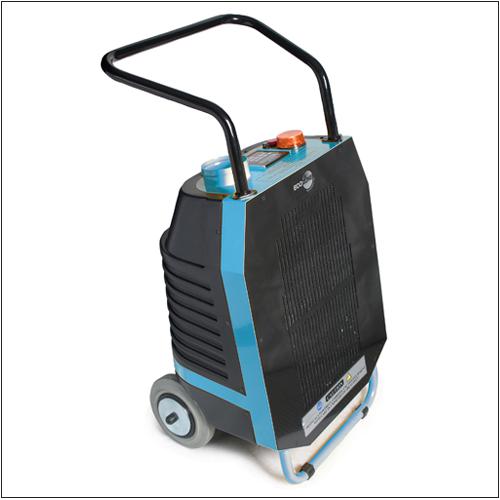Household Hazardous Waste Collection Events
| Sponsor | Time | Location | Contact |
|---|---|---|---|
| Allegheny County | May 5, 2012 | North Park Swimming Pool Parking Lot | Pa Resource Council - Zero Waste Pittsburgh - Mike Stepaniak 412-488-7452 |
| Beaver County | Oct. 13, 2012 |
Beaver County Recycling Center
Brady's Run Park New Brighton, PA
|
Pa Resource Council - Zero Waste Pittsburgh - Mike Stepaniak
412-488-7452 |
| Bedford County | Sept. 29, 2012 | Bedford County Fairgrounds |
Lou Ann Shontz
814-643-8150
|
| Berks County | Apr. 21, 2012 | Exeter Twp. Municipal Bldg. 4975 DeMoss Rd. in Reading |
Berks County Solid Waste Authority
610-478-6362
|
| Berks County | Oct. 20, 2012 | First Energy Stadium in Reading |
Berks County Solid Waste Authority
610-478-6362
|
| Blair County |
June 14, 2012
|
Peoples Natural Gas Field, Altoona
| Beth Strittmatter
(814) 696-8702
|
| Bradford, Sullivan and Tioga Counties |
June 29-30, 2012
|
Northern Tier Solid Waste Authority -Burlington Landfill
| Leigh Twoe
(570) 297-4177
ntswa@epix.net |
| Bucks County |
May 7 - Aug. 27, 2012
| 2012 Drop-off Sites and Dates | 2012 Program Brochure orBucks HHW Information |
| Butler County |
March 17 thru Oct. 20, 2012
| Environmental Coordination Services and Recycling 129 Ash Stop Road Evans City, PA |
Sheryl Kelly at 724-284-5305
|
| Cambria County |
May 19, 2012
| CTC ETF Facility (Johnstown) |
Pa Resource Council - Zero Waste Pittsburgh - Mike Stepaniak
412-488-7452 |
| Centre County |
Apr. 27-28, 2012
| Centre County Solid Waste Authority, |
David Immel at 814-238-7005
|
| Chester County | April 14 - Oct. 13 2012 | 2012 Drop-off Sites and Dates |
610-273-3771
|
| Delaware County | March - October 2012 | 2012 Drop-off Sites and Dates | |
| Elk County | TBD |
Stackpole Complex in St. Marys
| Bekki Titchner 814-776-5373 |
| Erie County | March 3 - Oct. 27, 2012 |
Erie County Recycling Convenience Center, 1624 Fillmore Avenue, Millcreek
| Call 866-815-0016 for more information |
| Fulton County | Sept. 29, 2012 |
Penn Village Shopping Center
|
Lou Ann Shontz
814-643-8150
|
| Huntingdon County | Sept. 29, 2012 |
Huntingdon County Fairgrounds
|
Lou Ann Shontz
814-643-8150
|
| Lawrence County |
April - Oct.,
2012
| Environmental Coordination Services and Recycling 129 Ash Stop Road Evans City, PA |
Jerry Zona
724-658-6925
|
| Montgomery County | April - Oct., 2012 | 2012 Drop-off Sites and Dates | Montgomery County 610-278-3618 9:00am-3:00pm |
| Northampton County | TBD | Northampton Community College Main Campus |
Thomas Dittmar
(610) 559-3200
|
| Philadelphia County | April-November 2012 | 2012 Drop-off Sites and Dates | Philadelphia HHW Information |
| Bradford, Sullivan and Tioga Counties | June 29-30, 2012 |
Northern Tier Solid Waste Authority -Burlington Landfill
|
Leigh Twoe
(570) 297-4177
ntswa@epix.net |
| Somerset County | May 19, 2012 | CTC ETF Facility (Johnstown) | Pa Resource Council - Zero Waste Pittsburgh - Mike Stepaniak 412-488-7452 |
| Union County | TBD | Silver Moon Flea Market | James McCormick 412-488-7452 |
| Washington County | July 14, 2012 | Washington Mall, Washington |
Pa Resource Council - Zero Waste Pittsburgh - Mike Stepaniak
412-488-7452 |
| Westmoreland County | June 18, 2012 | Alcoa Technical Center, Alcoa Center |
Don Ferrante
724-337-2143
|
| Westmoreland County | Oct. 6, 2012 | Westmoreland County Community College, Youngwood |
Ellen Keefe
724-836-4129
|
| York County | May 5, 2012 | York County Solid Waste Authority's Management Center parking lot | Lauren Washburn 717-845-1066 |
Household Hazardous Wastes (HHW) are those wastes produced in our households* that are hazardous in nature, but are not regulated as hazardous waste, under federal and state laws. Each person in Pennsylvania produces an average of four pounds of HHW each year or about 25,000 tons/yr. statewide. Included are such items as old paints and paint related products, pesticides, pool chemicals, drain cleaners, and degreasers and other car care products. Such consumer waste products, if carelessly managed can, and frequently do, create environmental and public health hazards.
*(The term "households" includes multiple residences, hotels, motels, bunkhouses, ranger stations, crew quarters, campgrounds, picnic grounds, and day-use recreation areas.)Household Hazardous Waste: How Should It Be Managed?
- The best method of managing Household Hazardous Waste (HHW) is to prevent its generation in the first place. This involves selecting the least toxic item "to do the job" and buying only the minimum amounts necessary. Buying in large quantities is not a bargain if half of it has to be discarded.
- If the material is still useable (i.e. has not been damaged/shelf life expired, etc.) check with friends and neighbors to see if they might be able to use it. Check with community groups such as Little League, Habitat for Humanity, etc. to see if they can use the product.
- If the material is not useable and/or if such "outlets" are not available, it should be taken to your community's HHW Collection Program. Such programs will ensure that your HHW is recycled or, otherwise, managed, in an environmentally preferable way, under the hazardous waste provisions of the law.
- If you have used oil, take it to a used oil collection site.
- Spent lead acid batteries can be returned to sellers. In Pennsylvania, dealers are required to take old batteries when new ones are purchased. Spent lead acid batteries may not be discarded in landfills.
- Note - Used oil and intact lead acid batteries from households are not considered to be hazardous wastes in Pennsylvania. However, they are frequently generated in households and are thus often grouped in the household hazardous waste category. They are also frequently included in HHW collection programs.
- If your community does not have a collection program or you must discard the materials prior to the next scheduled event, you may legally discard them in your regular trash pick up, provided:
- You have read the label and complied with any disposal directions.
- Liquids have either been allowed to evaporate (if water based) or absorbed (if non-water based) on some material such as vermiculite, cat litter, or sawdust, so that there are no freestanding liquids).
- The remaining residue has been packaged to prevent leakage while the material is being transported to the disposal facility
- The material is placed out in small quantities, over several collection periods.
- Pharmaceutical Disposal
- Pharmaceutical Collections
- Non-Controlled Substances Only Registered Onsite Pharmaceutical Collections (xls)
- DEA National Drug Take-Back Initiative April 28, 2012
- Procedures for conducting muncipal pharmaceutical collections in PA (pdf)
- Notification for Registration of Onsite Pharmaceutical Drug Collection Program 2520-FM-BWM0010 (eLibrary) - To be used only by pharmacies for onsite pharmaceutical collections
- Instructions for homeowner to dispose of unwanted medication if there is no pharmaceutical collection in your area
- Federal Guidelines for Proper Disposal of Prescription Drugs - U.S. Office of National Drug Control Policy
- Disposal by Flushing of Certain Unused Medicines: What You Should Know - U.S. Food and Drug Administration
- How to Manage Old Propane Cylinders and Tanks












